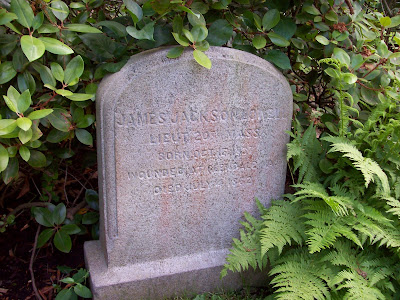
Displayed in the courtyard of the State House are statues of prominent figures in Massachusetts history, including Daniel Webster, a U.S. senator from Massachusetts from 1845 through 1850. Webster’s support of the Compromise of 1850, including the Fugitive Slave Law which enforced federal capture and return of runaway slaves, triggered the enmity of the abolitionists in Massachusetts and resulted in his resignation from the Senate.

During the Civil War volunteer regiments marched past the State House as they departed from Boston for war. The first African-American regiment, the 54th Massachusetts Volunteer Infantry Regiment, paraded past the State House before departing for war on May 28, 1863. A magnificent bronze memorial depicting the parade of the 54th Massachusetts Regiment led by Colonel Robert Gould Shaw faces the State House on the opposite side of Beacon Street. The memorial was the creation of noted sculptor Augustus Saint-Gaudens and was unveiled on Memorial Day in 1897.

Our walk continued along Park Street to the Union Club, founded in 1863 to support President Abraham Lincoln’s reelection in 1864. Many of Boston's intellectual and political elite were members of this private men's dining club, whose conditions for membership included unwavering support of the Constitution of the United States and of the government to suppress the Confederate rebellion. In 2013 the Union Club celebrates its sesquicentennial anniversary.

We next stopped at the Park Street Church, a Congregational Church founded in 1809, which hosted the first anti-slavery speech of abolitionist publisher William Lloyd Garrison on July 4, 1829.

We advanced along Tremont Street to the Tremont Temple Baptist Church, where noted abolitionist figures, including Harriet Beecher Stowe, Frederick Douglass, and Thomas Higginson awaited news by telegraph of President Lincoln's signing of the Emancipation Proclamation on January 1, 1863.

Crossing Tremont Street and proceeding along School Street we stopped in the courtyard of the Old City Hall, constructed in 1862 on the site of the first public school in America.

Directly opposite the Old City Hall is the Parker House Hotel, a purveyor of dining and accommodations to significant players in American and Civil War history. The “Secret Six,” also known as the Secret Organization of Six, was a group of six prominent Bostonians who secretly funded John Brown’s raid on Harper’s Ferry. The “Secret Six” included physician Samuel Gridley Howe, ministers Thomas Higginson and Theodore Parker, schoolmaster Franklin Sanborn, philanthropist Gerrit Smith, and industrialist merchant George Luther Stearns.1 In 1859 Stearns, a chief contributor of funds and arms for John Brown, met Brown at the Parker House to discuss and fund the Harper's Ferry raid in October of that year. In April 1865 John Wilkes Booth stayed at the hotel the week before his assassination of President Lincoln and practiced at a nearby shooting gallery.

Continuing along School Street we arrived at the site of the Old Corner Book Store at the intersection of School and Washington Streets. Formerly known as "Publishers Row," this was the site of Ticknor and Fields, the publisher of Harriet Beecher Stowe's Uncle Tom's Cabin in 1852. This location is also significant in American history as the site of the home of Anne Hutchinson, a martyr to women's rights in Puritan society.
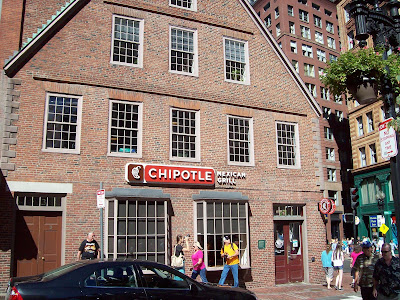
Directly opposite the site of the Old Corner Book Store is the Irish Famine Memorial, dedicated in 1998 to commemorate the 150th anniversary of the Great Famine in Ireland and the emigration of millions from Ireland to America. Irish immigrants played a significant role in the Civil War, enlisting in military service for both the Union and the Confederacy.
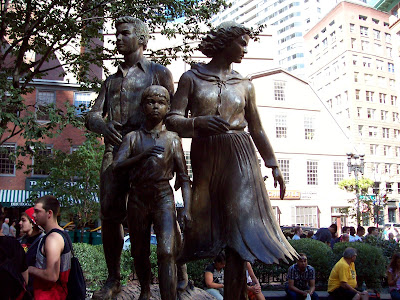.jpg)
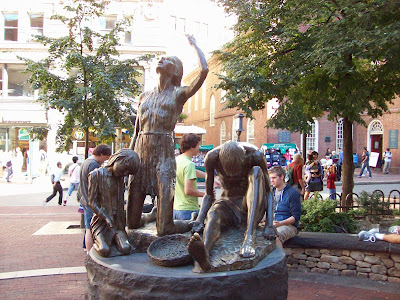.jpg)
Our tour continued along Washington Street to the Old State House, where abolitionist publisher William Lloyd Garrison sought refuge from an angry mob on October 21, 1835.

Proceeding along State Street we stopped at Court Square, the site of the Massachusetts Supreme Judicial Courthouse, which rendered decisions on fugitive slave cases in the 1850s. In 1851 Shadrach Minkins was arrested and held in the courthouse awaiting trial. He was rescued by a mob of black abolitionisits. Thomas Sims and Anthony Burns were also held here when they were sentenced to return to their Southern owners. Ironically Sims and Burns were led along State Street past the site where Crispus Attucks, an African-American, was killed during the Boston Massacre in 1770, a harbinger of the War of Independence.

Faneuil Hall has always been the platform for inspirational calls for liberty and freedom throughout American history. Before and during the Civil War the Hall hosted abolitionist orators Frederick Douglass and William Lloyd Garrison. Following the surrender of Fort Sumter to Confederate forces on April 13, 1861 President Abraham Lincoln called for 75,000 volunteers to defend Washington, D. C. At Faneuil Hall on April 16, 1861, Massachusetts governor John Andrew commissioned four Massachusetts Regiments, the 3rd, 4th, 6th, and 8th Massachusetts Volunteer Regiments, as the “Minutemen of 1861” to answer President Lincoln’s call. The 3rd and the 6th Massachusetts departed from Boston on April 17, and the 4th and the 8th departed on April 18, the anniversary of Paul Revere’s famous midnight ride.

Boston Civil War Tours also runs the Beacon Hill Civil War Walking Tour, which focuses on the homes of noted Boston abolitionists and significant antislavery locales on Beacon Hill. Please visit my blog post, Beacon Hill Walking Tour, for a pictorial overview of the Beacon Hill tour. I highly recommend these excellent tours to anyone with an interest in Boston Civil War history. For more information about Boston Civil War Tours please visit http://www.bostoncivilwartours.com.
References:
1“The Trial of John Brown: The Secret Six,” The Secret Six: Influential Supporters of John Brown (http://law2.umkc.edu/faculty/projects/ftrials/johnbrown/secretsixdetails.html: 23 August 2013).

.jpg)



.jpg)
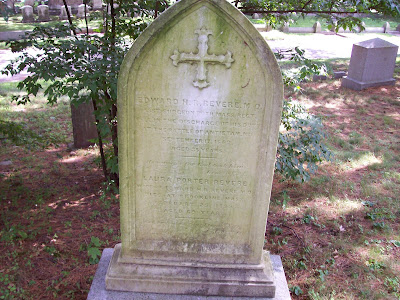.jpg)
.jpg)

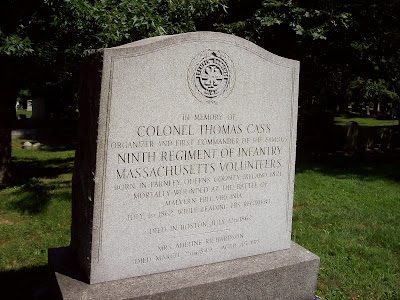.jpg)
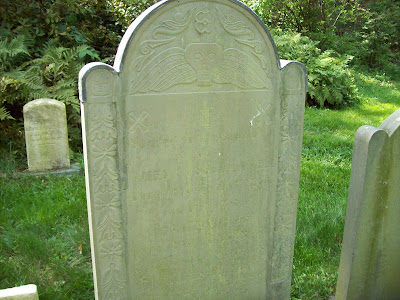
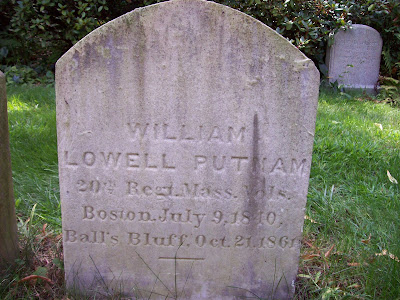.jpg)
